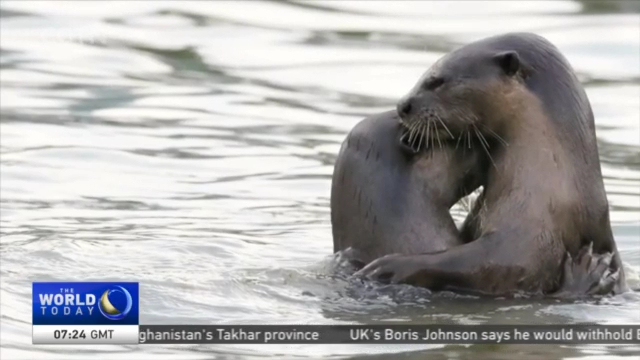
16:10, 09-Jun-2019
Wildlife in Singapore: Plants and animals adapt to living in an urban environment
Updated
00:02, 10-Jun-2019
03:03

Singapore managed to transform itself into a bustling financial hub in just one generation's time. However, with this rapid industrialization, the island nation is losing its natural habitats and wildlife quickly. But thanks to continued efforts by the authorities to build parks and plant greenery, some of the wildlife species have managed to adapt to city life. Our correspondent Miro Lu has more.
It is an "adapt or die" situation for critters in the island nation of Singapore. Decades of development has destroyed much of the country's natural habitats and the animals living in them.
Subaraj Rajathurai is a wildlife consultant. In the past three decades, he's consulted both conservation groups and government bodies on how to develop the country without damaging habitats vital for native faunas.
SUBARAJ RAJATHURAI FOUNDER, STRIX WILDLIFE CONSULTANCY "To keep that balance between conservation and development is always a difficult task. It's getting to where people are understanding it more than they did 30 years ago. There's still a great demand because our population continues to grow."
Land is scarce in the lion city, and as its population continues to grow, tropical rainforests and wetlands will need to give way for apartments or offices.
But surprisingly, some creatures native to Singapore managed to live and thrive in an urban environment.
The most famous being the smooth-coated otters. After decades of absence in Singapore, scientists now estimate there are about 70 otters on the island.
They've been spotted splashing about in waterways, devouring fish in the Singapore River - and even photobombing tourists' marriage proposal.
Not all wildlife are celebrated and loved by the residents though. Long-tailed macaques and snakes have been known to turn up in residential areas, and it was a subject brought up by lawmakers in the Parliament.
According to Rajathurai, one-third of the country's native animals have disappeared in just 30 years. Those that survived go on to live in built-up places because they are able to adapt. But even then, the number of roadkills have increased because of the animals' proximity to civilization.
SUBARAJ RAJATHURAI FOUNDER, STRIX WILDLIFE CONSULTANCY "It's a small percentage of the biodiversity that are able to adapt very well, some of them have foregone their speciality and become more adaptable. There are others that still require special habitats that are fast disappearing and they need us to protect them."
Between the lack of space and an exploding population, the little land that Singapore has will always be a battleground for conservationists and property developers. And it seems that it is a fight that will continue for some time to come. Miro Lu, CGTN, Singapore.

SITEMAP
Copyright © 2018 CGTN. Beijing ICP prepared NO.16065310-3
Copyright © 2018 CGTN. Beijing ICP prepared NO.16065310-3